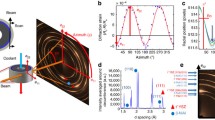Abstract
This paper reports recent research on abradable materials employed for aero-engine applications. Such thermal spray coatings are used extensively within the gas turbine, applied to the inner surface of compressor and turbine shroud sections, coating the periphery of the blade rotation path. The function of an abradable seal is to wear preferentially when rotating blades come into contact with it, while minimizing over-tip clearance and improving the efficiency of the engine. Thermal spraying of an abradable coating onto a substrate imparts two components of residual stress; rapid quenching stresses as the spray material cools on impact and stresses arising from differential thermal contraction. In-service thermal stresses are superimposed by the differential expansion of these bonded layers. The combination of the production and operation history will lead to thermal-mechanical fatigue damage within the abradable coating. The present paper will describe the numerical modeling and sensitivity analysis of the thermal spray process. The sensitivity of residual stresses (with varying material properties, coating/substrate thickness, Poisson’s ratio, and substrate temperature) predicted by the Tsui and Clyne progressive deposition model enabled identification of performance drivers to coating integrity. Selecting material properties that minimize in-service stresses is a crucial stage in advancing future abradable performance.












Similar content being viewed by others
References
F. Ghasripoor, R. Schmid, and M. Dorfman, Abradables Improve Gas Turbine Efficiency, Mater. World, 1997, 5(6), p 328-330
R. Knight and R.W. Smith, Thermal Spray Forming of Materials, Powder Metal Technologies and Applications, ASM Handbook, Vol 7, P.W. Lee, Ed., ASM International, OH, 1998, p 408-419
G.G. Stoney, The Tension of Metallic Films Deposited by Electrolysis, Proc. R. Soc. Lond. A, 1909, 82, p 172-175
S. Timoshenko, Analysis of Bi-Metal Thermostats, J. Opt. Soc. Am., 1925, 11(3), p 233-255
C.H. Hsueh and A.G. Evans, Residual Stresses and Cracking in Metal/Ceramic Systems for Microelectronics Package, J. Am. Ceram. Soc., 1985, 68(3), p 120-127
C.H. Hsueh, Modeling of Elastic Deformation of Multilayers Due to Residual Stresses and External Bending, J. Appl. Phys., 2002, 91(12), p 9652-9656
W.G. Mao, Y.C. Zhou, L. Yang, and X.H. Yu, Modeling of Residual Stresses Variation with Thermal Cycling in Thermal Barrier Coatings, Mech. Mater., 2006, 38(12), p 1118-1127
T.W. Clyne, Residual Stresses in Surface Coatings and Their Effects on Interfacial Debonding, Key Eng. Mater., 1996, 116, p 307-330
X.C. Zhang, B.S. Xu, H.D. Wang, and Y.X. Wu, An Analytical Model for Predicting Thermal Residual Stresses in Multilayer Coating Systems, Thin Solid Films, 2005, 488, p 274-282
Y.C. Tsui and T.W. Clyne, An Analytical Model for Predicting Residual Stresses in Progressively Deposited Coatings, Part 1: Planar Geometry, Thin Solid Films, 1997, 306, p 23-33
R.E. Johnston and W.J. Evans, Freestanding Abradable Coating Manufacture and Tensile Test Development, Surf. Coat. Technol., 2007, 202(4-7), p 725-729
S. Kuroda and T.W. Clyne, The Quenching Stress in Thermally Sprayed Coatings, Thin Solid Films, 1991, 200, p 49-66
S.H. Leigh, C.K. Lin, and C.C. Berndt, Elastic Response of Thermal Spray Deposits under Indentation Tests, J. Am. Ceram. Soc., 1997, 80(8), p 2093-2099
H.I. Faraoun, J.L. Seichapine, C. Coddet, H. Aourag, J. Zwick, N. Hopkins, D. Sporer, and M. Hertter, Modelling Route for Abradable Coatings, Surf. Coat. Technol., 2006, 200(22-23), p 6578-6582
X. Jiang, J. Matejicek, and S. Sampath, Substrate Temperature Effects on Splat Formation, Microstructure Development and Properties of Plasma Sprayed Coatings. Part I: Case Study for Partially Stabilized Zorconia, Mater. Sci. Eng. A, 1999, 272(1), p 181-188
X. Jiang, J. Matejicek, and S. Sampath, Substrate Temperature Effects on Splat Formation, Microstructure Development and Properties of Plasma Sprayed Coatings. Part II: Case Study for Molybdenum, Mater. Sci. Eng. A, 1999, 272(1), p 189-198
V. Teixeira, M. Andritschky, W. Fischer, H.P. Buchkremer, and D. Stöver, Analysis of Residual Stresses in Thermal Barrier Coatings, J. Mater. Process. Tech., 1999, 92-93, p 209-216
D. Wang and C.C. Berndt, Anisotropic Thermal Expansion Behaviour of Thermally Sprayed Coatings, Proceedings of 2nd Plasma-Technik-Symposium, Vol 2, S. Blum-Sandmeier, H. Eschnauer, P. Huber, and A.R. Nicoll, Ed., 1991 (Lucerne, Switzerland), p 295-304
Acknowledgments
The data in this paper were generated in the MACE (Materials for Arduous Cycles and Emissions) project (TP/2/ET/6/I/10037), which forms part of the Technology Strategy Board Technology Programme. The author would like to acknowledge the technical contributions from colleagues based at Rolls Royce plc., in particular Chris Sellars, Sulzer Metco, and Cranfield University.
Author information
Authors and Affiliations
Corresponding author
Rights and permissions
About this article
Cite this article
Johnston, R.E. The Sensitivity of Abradable Coating Residual Stresses to Varying Material Properties. J Therm Spray Tech 18, 1004–1013 (2009). https://doi.org/10.1007/s11666-009-9378-2
Received:
Revised:
Accepted:
Published:
Issue Date:
DOI: https://doi.org/10.1007/s11666-009-9378-2




